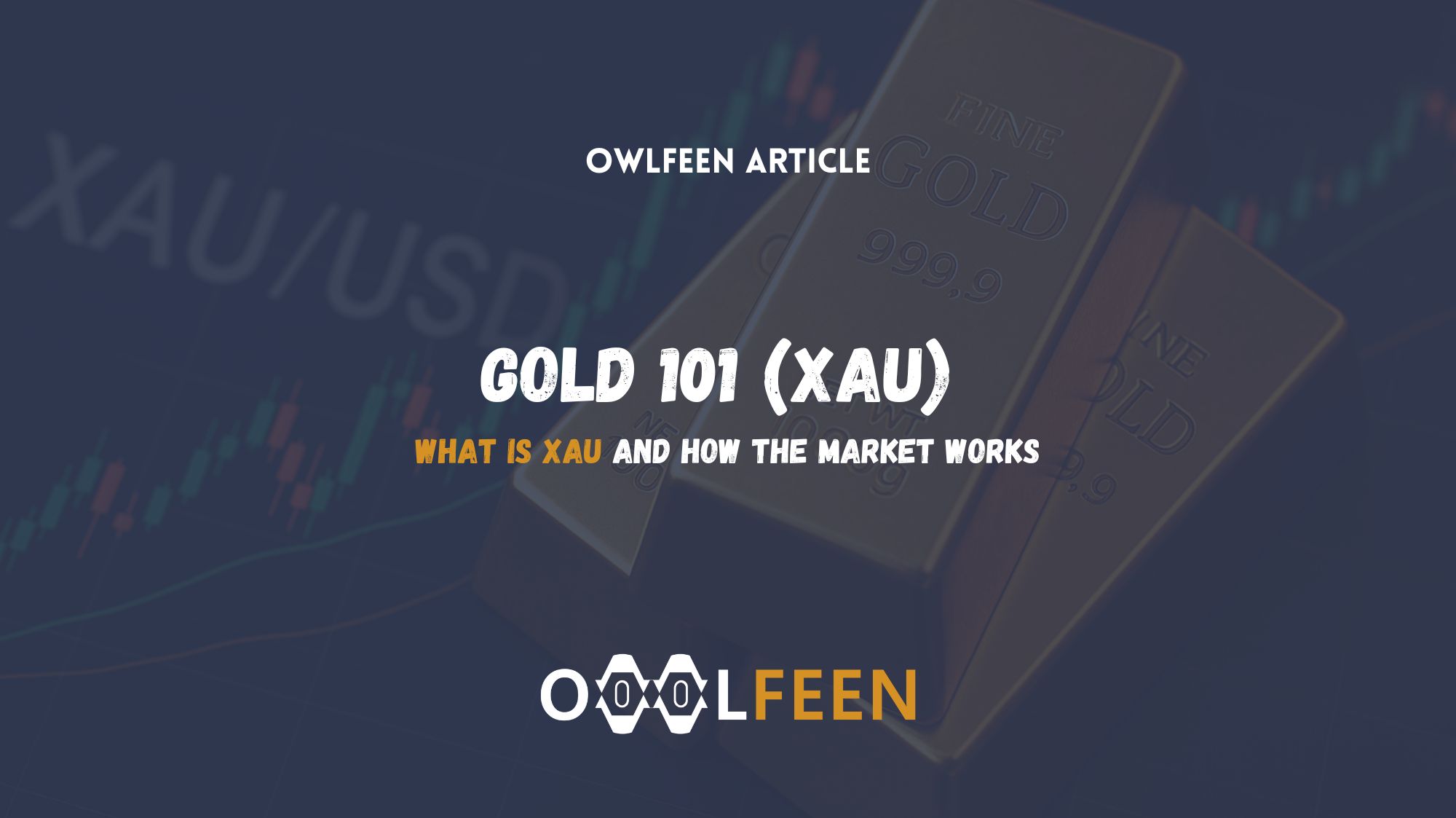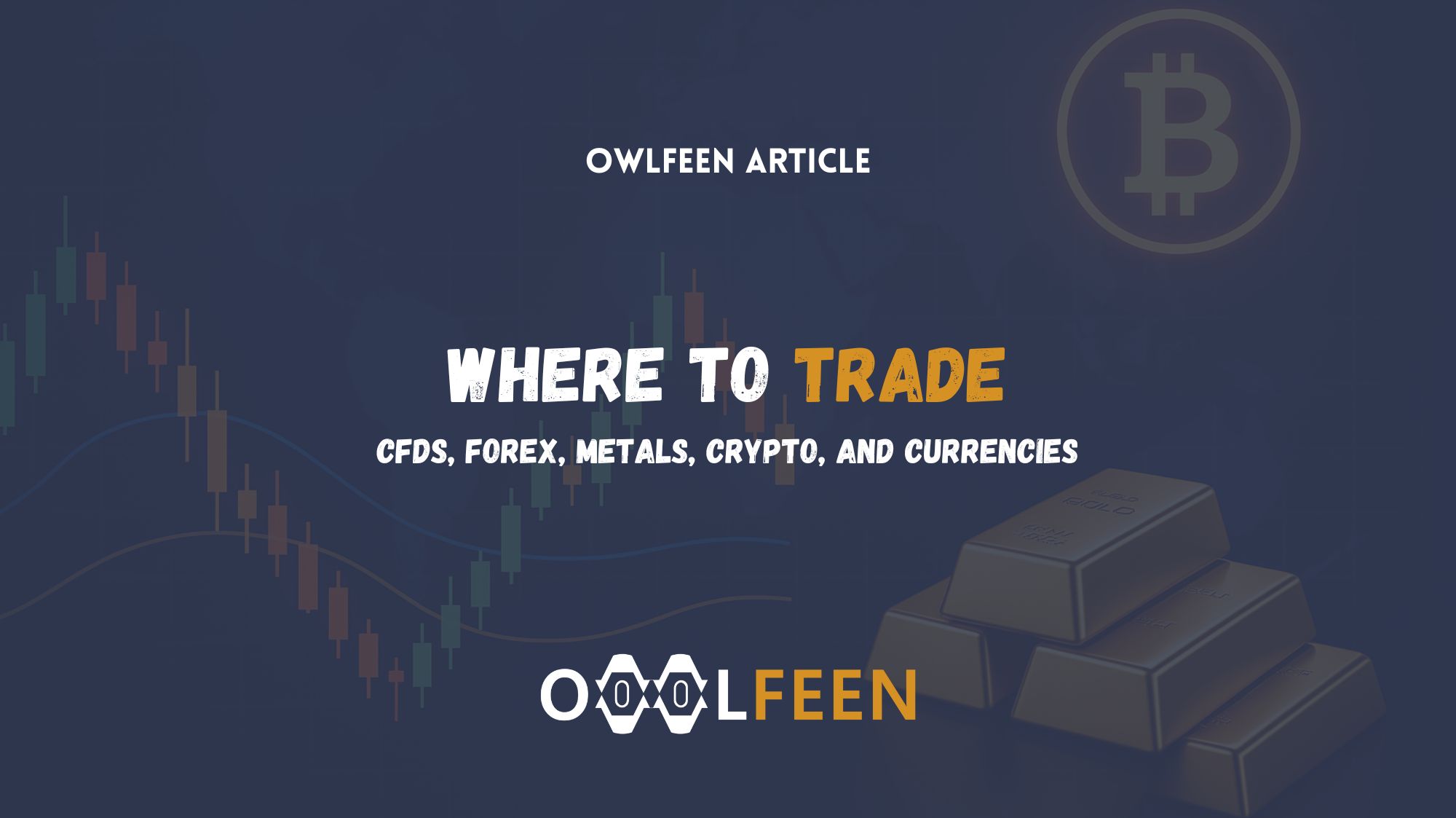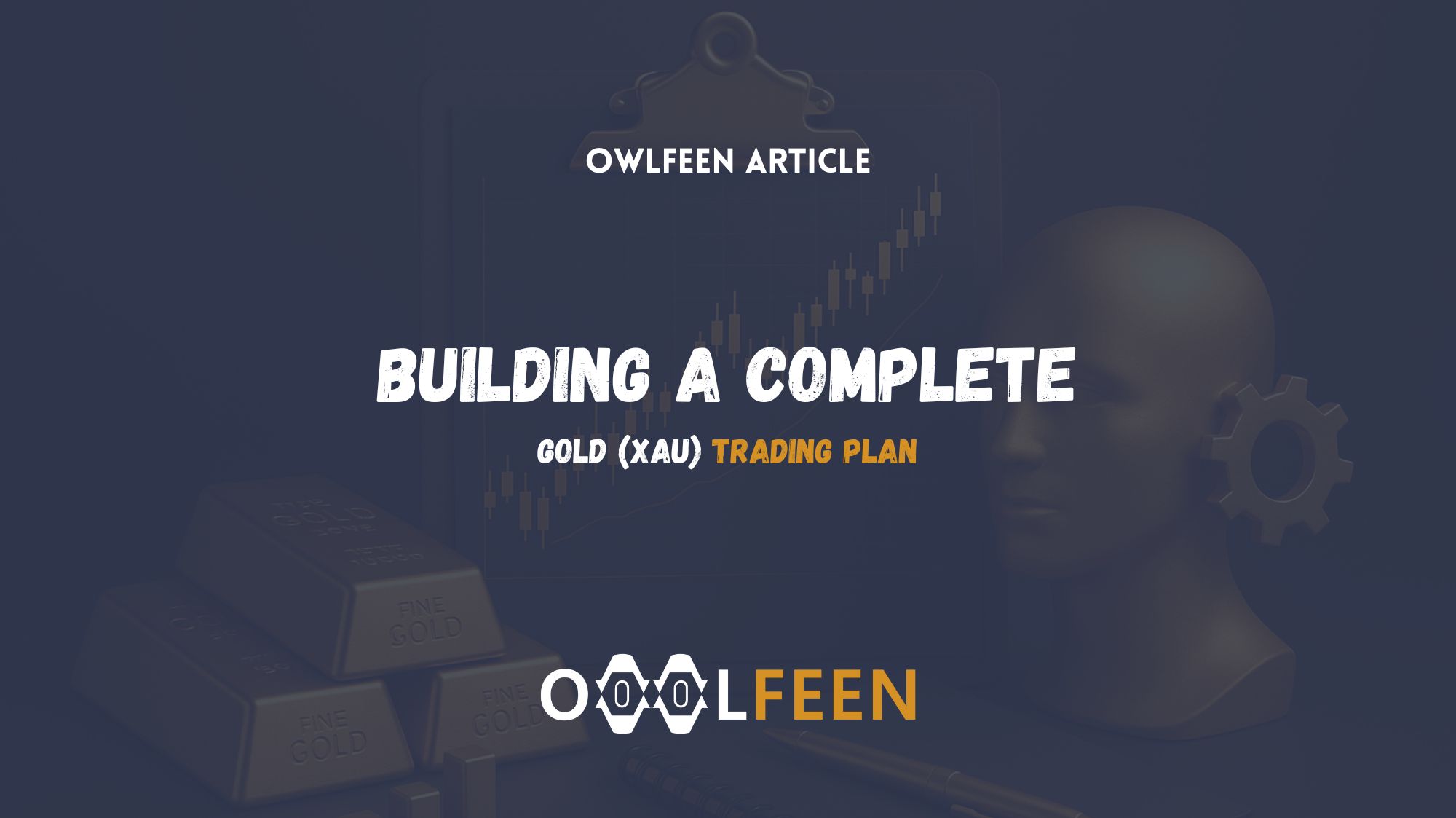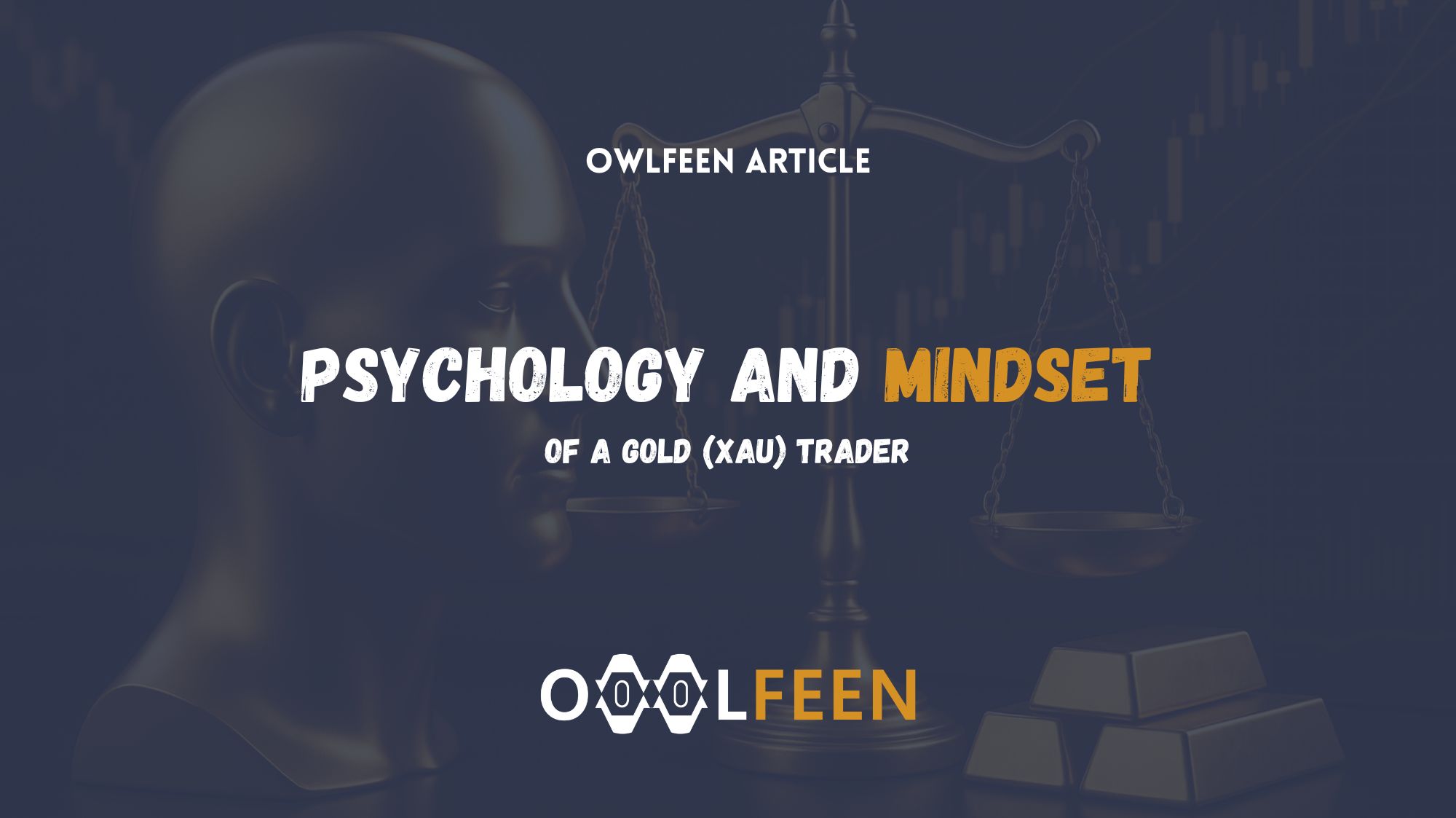Gold has been a symbol of wealth and stability for thousands of years. In modern financial markets, it plays an even more strategic role as both a commodity and a financial instrument traded worldwide. Traders and investors refer to gold using its international ticker symbol XAU, which represents one troy ounce of gold. Understanding how gold is priced, quoted, and traded across global markets is the foundation of every successful gold trading strategy.
This lesson introduces you to the basics of the gold market, explains what XAU means, how it is traded, and the factors that shape its price every day.
What Does XAU Mean
In trading terminology, XAU is the code used to denote one troy ounce of gold. It follows the ISO 4217 standard, which defines currency codes worldwide. Similar to how USD stands for the United States dollar or EUR for the euro, XAU represents gold as a currency symbol rather than a commodity.
The troy ounce, used for precious metals, equals approximately 31.1035 grams, slightly heavier than a standard ounce used for everyday goods. When you see a quote such as XAU/USD = 2,350, it means one ounce of gold is worth 2,350 US dollars.
This pair functions like any forex instrument, where the first part (XAU) is the base and the second (USD) is the quote currency. The price shows how many dollars are required to buy one ounce of gold.
The Global Gold Market
Gold is traded around the clock across multiple exchanges and financial centers. The most important include the London Bullion Market (LBMA), New York Mercantile Exchange (COMEX), Shanghai Gold Exchange (SGE), and various over-the-counter (OTC) networks used by banks and institutions.
Unlike many commodities that depend on physical delivery, most gold transactions today are conducted electronically through CFDs, futures, ETFs, or spot trading accounts. This makes the market extremely liquid, allowing millions of traders to buy or sell instantly without handling physical metal.
Gold trading operates nearly 24 hours a day from Monday to Friday, starting with the Asian session, moving through Europe, and ending with the US session. Liquidity peaks during the overlap between London and New York sessions, when institutional volume is highest.
Why Gold Is Treated Like a Currency
Gold is unique because it behaves both as a commodity and a currency. While it is a physical metal, it often moves inversely to fiat currencies, particularly the US dollar.
Historically, the dollar was pegged to gold under the Bretton Woods system, which established gold as the anchor of global monetary value. Even after the system ended in 1971, gold remained the world’s ultimate “store of value.” Central banks still hold large reserves of gold to strengthen confidence in their currencies.
In the forex market, traders view gold as a safe-haven asset. When uncertainty rises-such as during inflation, wars, or financial crises-investors shift capital from risk assets into gold. This causes its price to climb when global risk sentiment falls.
How Gold Prices Are Determined
Gold prices are influenced by both market fundamentals and macroeconomic conditions. The main factors include:
-
US Dollar Strength: Gold and the dollar typically move in opposite directions. A weaker dollar makes gold cheaper for foreign investors, boosting demand.
-
Inflation and Interest Rates: Gold tends to rise when inflation increases or when central banks lower interest rates. Since gold does not pay interest, higher yields on bonds make it less attractive, while lower yields favor gold.
-
Central Bank Policies: When central banks diversify reserves or purchase gold, demand rises.
-
Global Uncertainty: Political tension, war, or recession push investors toward safe-haven assets like gold.
-
Supply and Demand: Although mining affects long-term supply, daily gold prices are mostly driven by financial demand, not physical availability.
Gold’s Relationship with Other Markets
Gold often has strong correlations with other asset classes:
-
Inverse correlation with USD: When the US dollar index (DXY) falls, gold usually rises.
-
Positive correlation with inflation: Rising consumer prices often lift gold prices as investors seek protection.
-
Relationship with bonds: Gold competes with government bonds as a safe asset. When yields drop, gold becomes more appealing.
-
Stock market hedge: During stock market volatility, gold often gains as investors rebalance portfolios.
Understanding these relationships allows traders to anticipate how gold might react to macroeconomic events such as Federal Reserve announcements or inflation data releases.
The Role of XAU/USD in Modern Trading
The XAU/USD pair is one of the most traded instruments worldwide. It is offered by nearly every broker, allowing both retail and institutional traders to speculate on gold’s price movement.
Traders can go long (buy) when they expect gold prices to rise or go short (sell) when they expect them to fall. With modern trading platforms, these positions are executed instantly without the need to hold or deliver physical gold.
The average daily range of XAU/USD can exceed 200 to 300 pips, providing numerous opportunities for intraday and swing traders. However, volatility can also increase risk, making proper leverage and stop-loss usage critical.
How Gold is Quoted and Measured
Gold prices are typically quoted to two decimal places in USD per ounce (for example, 2345.50). Each movement of 0.01 represents a pip in gold trading. On platforms like MetaTrader or TradingView, this can vary slightly depending on the broker’s pricing model.
Contract sizes depend on the trading instrument. In futures markets, one COMEX contract represents 100 troy ounces. In CFDs, brokers allow flexible lot sizes such as 0.10 or 1.00 lots, where one lot typically equals 100 ounces. This flexibility lets traders choose position sizes suitable for their account balance.
The Structure of the Gold Market
The gold market can be divided into several layers:
-
Spot Market: The current market price for immediate settlement. Retail traders usually access gold through spot CFDs.
-
Futures Market: Standardized contracts traded on exchanges like COMEX for delivery at a future date. Used mainly by institutions and hedgers.
-
ETFs and Funds: Products like SPDR Gold Shares (GLD) allow investors to gain exposure to gold without trading physically.
-
Physical Market: Includes bullion, bars, and coins traded by jewelers, central banks, and private investors.
Each segment interacts closely, meaning that movements in one area (such as futures) quickly influence the spot price seen on trading platforms.
Educational Takeaway
Before trading gold, understand that it behaves differently from currency pairs or stocks. It is heavily influenced by macroeconomic sentiment, interest rate expectations, and geopolitical risk. It can trend strongly for months but also experience sharp pullbacks within hours.
Beginners should start by observing how XAU/USD reacts to major news events like the US Non-Farm Payrolls (NFP), Consumer Price Index (CPI), or Federal Reserve rate decisions. This builds a sense of how fundamental and technical forces interact in the gold market.
Conclusion
Gold remains one of the most traded and respected assets in the world. Known by its symbol XAU, it represents far more than a precious metal. It is a reflection of global confidence, economic health, and investor psychology. Understanding what XAU is and how the gold market operates is the first step toward mastering gold trading.
In the next part of this series, we will explore Spot vs Futures vs ETF vs CFD: Choosing the Right Instrument to help you decide which form of gold trading best suits your goals and risk profile.
This article is part of the Trading Gold A–Z educational series on OwlFeen Learn, designed to help traders understand every core aspect of the gold market and develop a complete trading foundation.
The full series includes:
Each part builds upon the previous one to provide a structured and comprehensive understanding of how to analyze, plan, and execute trades in the gold market effectively.



